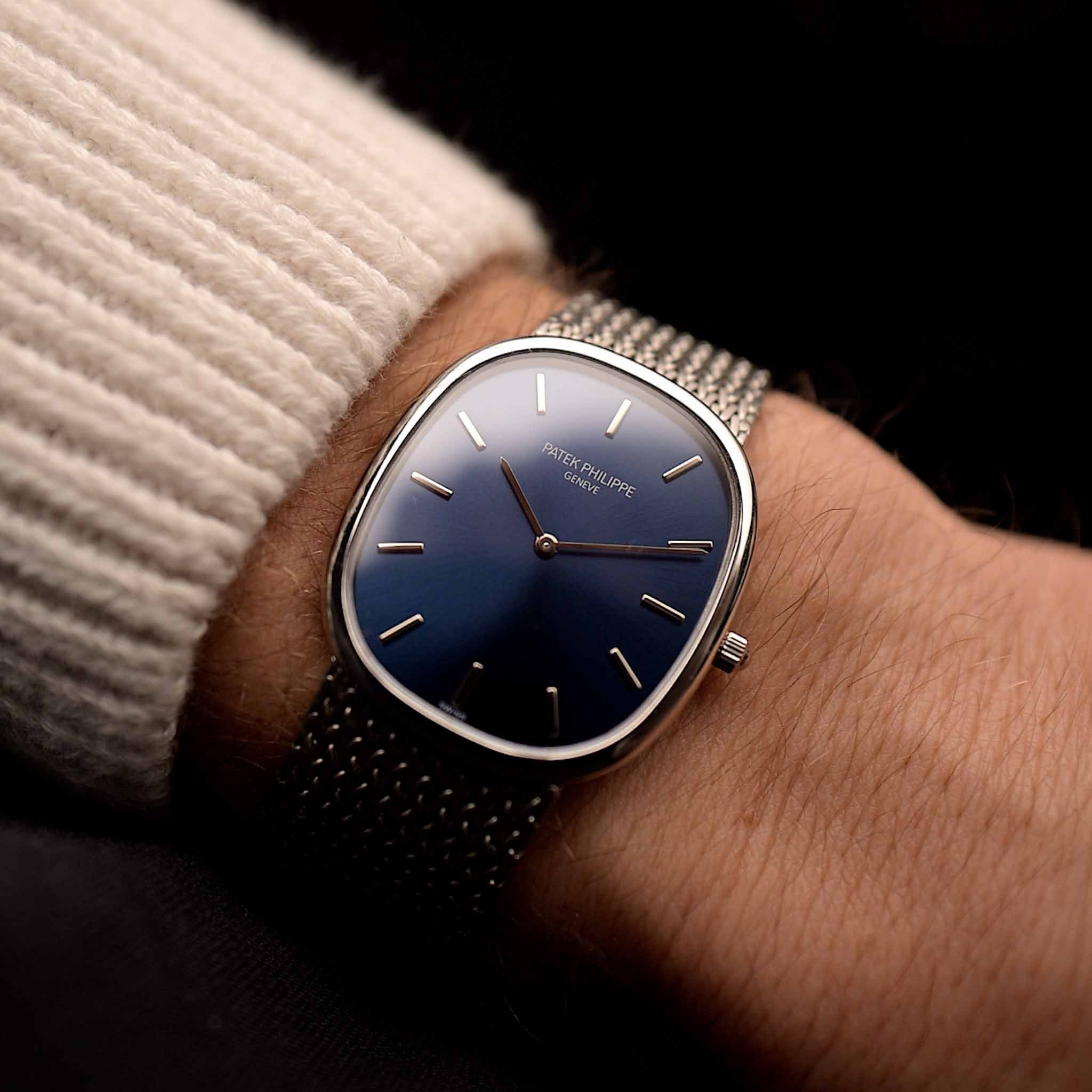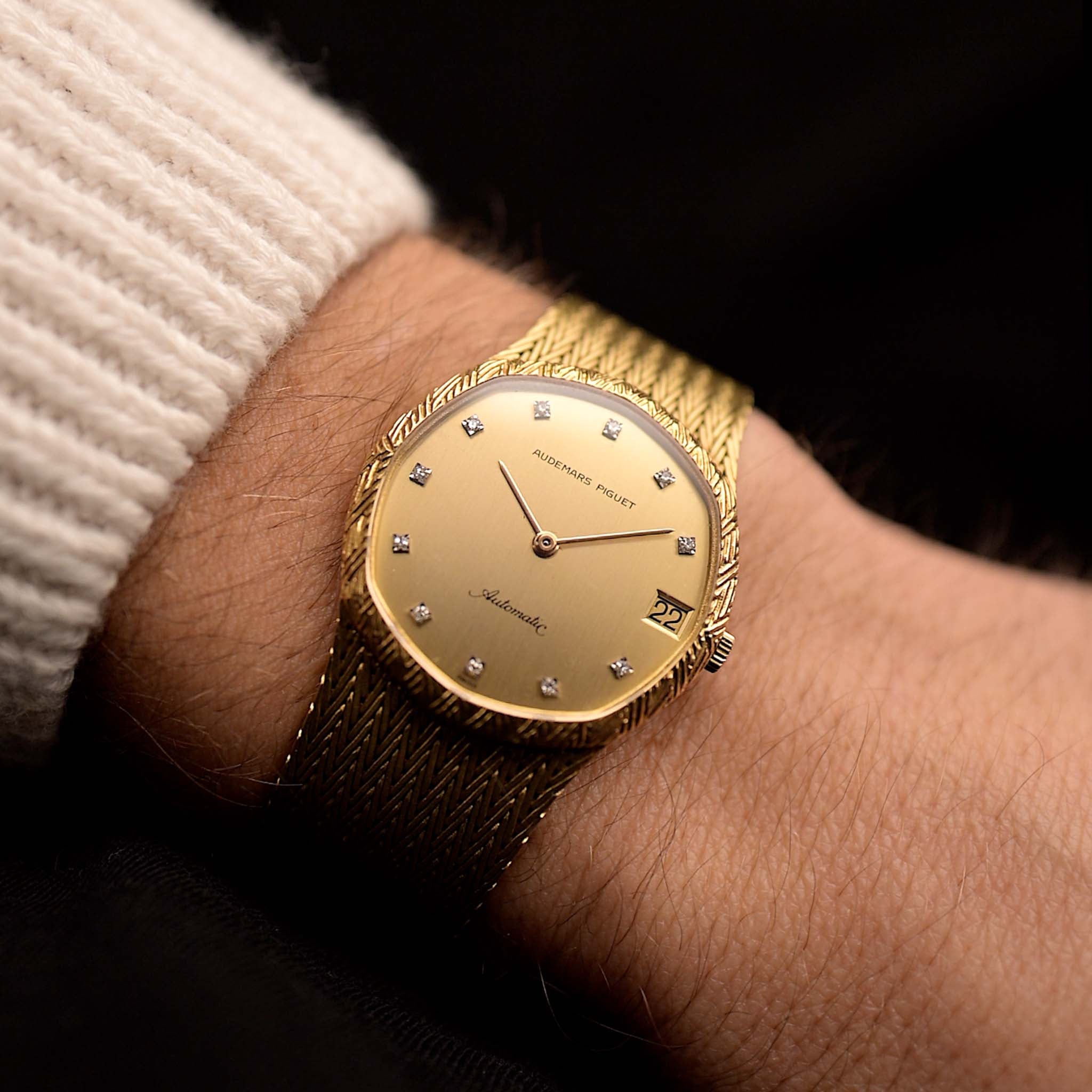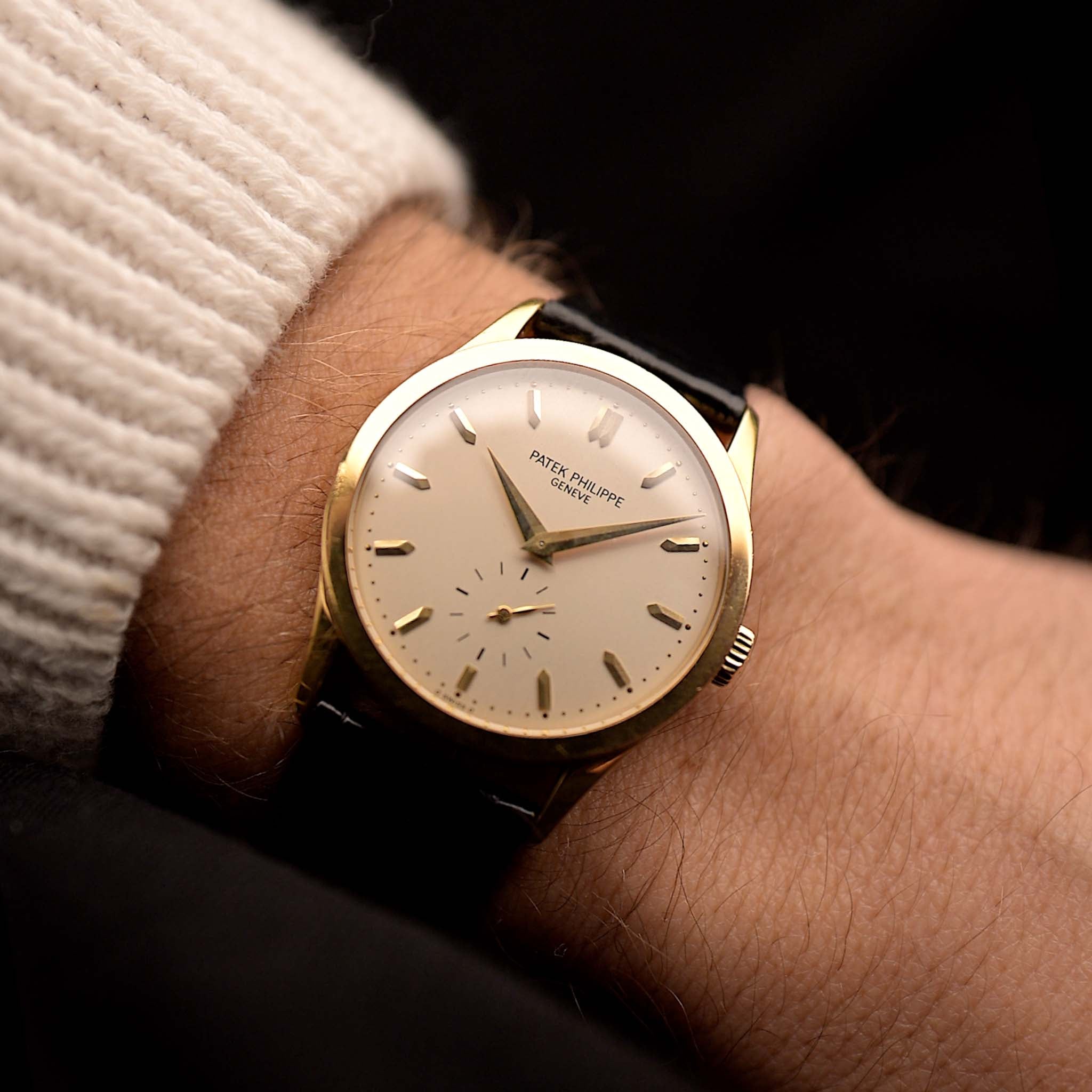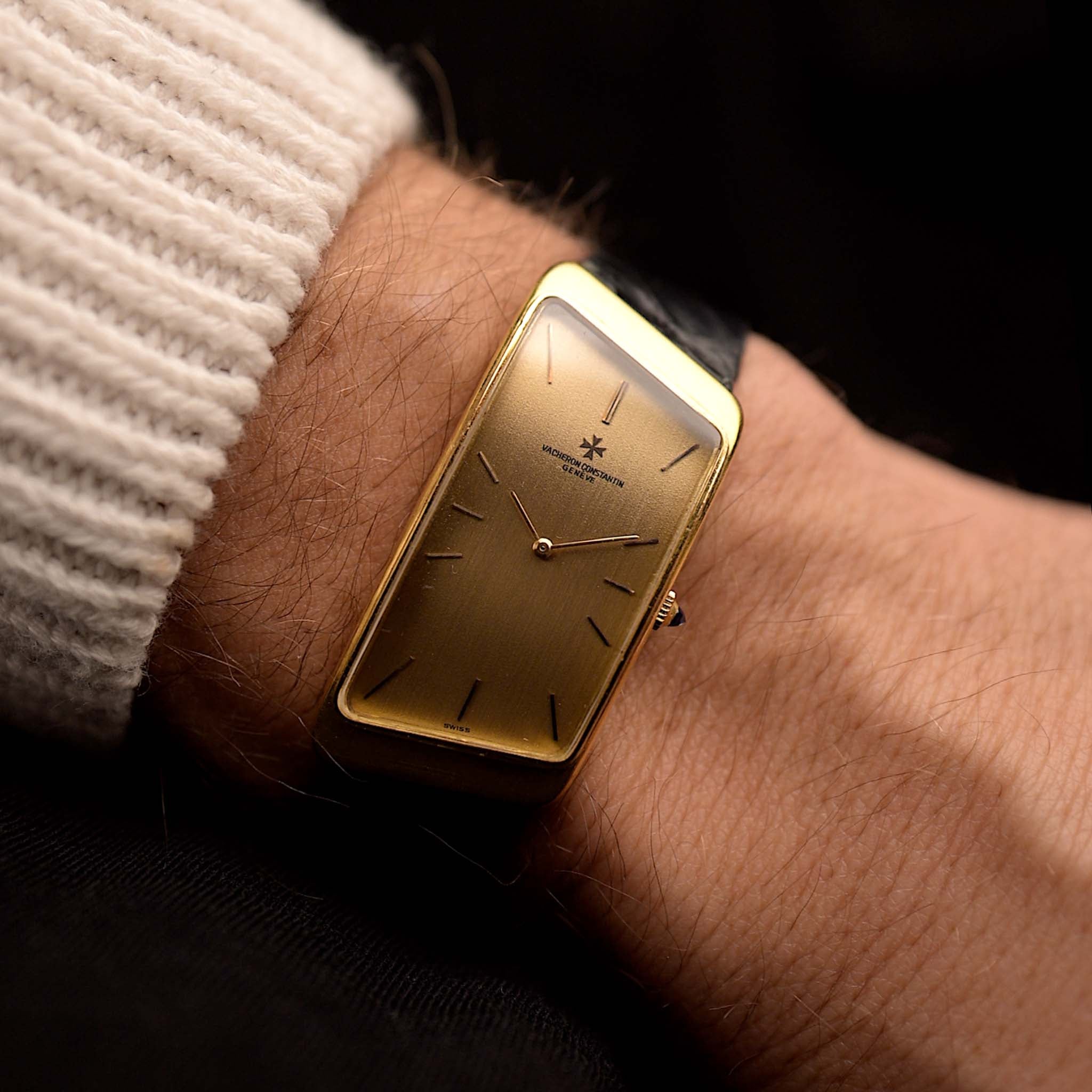What you may have not thought about yet is that “LeCoultre” watches were not only produced for the US market but also partially within the US itself. That means that the case, strap, buckle, crown (with a US-only marking) and also all accessories were produced locally. Several design decisions were made locally and led to differences to the European market. One perfect example for this trend is the case size.
April 12, 2022
Why Size Matters - Jaeger-LeCoultre & the US Watch Cases
 Marcus Siems @siemswatches
Marcus Siems @siemswatches
Collector, Author, Data Analyst
What you may have not thought about yet is that “LeCoultre” watches were not only produced for the US market but also partially within the US itself. Jaeger-LeCoultre exported the movement, the hands and the dial signed LeCoultre overseas. That’s it, something very far from a complete watch. The case, strap, buckle, crown (with a US-only marking) and also all accessories were produced locally[1-2], which was still cheaper than paying customs taxes at market entry.
And the logistics of this endeavor went even further. The distribution was through the years organized by Vacheron & Constantin, Longines-Wittnauer, Cartier and Applied Watches Inc. - all of which have likely been intermingled as well[3-4].
 Something to always keep in mind is how tight-knit the watch world is and always has been... In the middle of the 20th Century the US-versions of Vacheron Constantin, Longines-Wittnauer & Jaeger-LeCoultre watches were distributed through the same companies. Also the local production of accessories and cases was similarly entangled. Photo @goldammer.me
Something to always keep in mind is how tight-knit the watch world is and always has been... In the middle of the 20th Century the US-versions of Vacheron Constantin, Longines-Wittnauer & Jaeger-LeCoultre watches were distributed through the same companies. Also the local production of accessories and cases was similarly entangled. Photo @goldammer.me
All this shows that the watches produced for the US market were also highly specialized for the US market. This went so far that even certain models had different names overseas - The classic JLC alarm watch most famously known as the Memovox, became the “Wrist Alarm” or the “Beau Brummel” in the US.
The important part is that it is not just parts and names; many of the design decisions were made locally within the US and led to differences to the European market. The perfect example for this trend is the case size.
 Figure 3. Distribution of LeCoultre-USA (red) and JLC-Europe (blue) case diameters for watches between 1940-1975[5].
Figure 3. Distribution of LeCoultre-USA (red) and JLC-Europe (blue) case diameters for watches between 1940-1975[5].
If you didn’t believe me thus far this graph hopefully changes your mind. We can clearly see that the US market heavily favored watches sized between 33mm-35mm, which is rather small to the equivalent European taste for watches sized mainly between 35mm-37mm. And in the world of wrist-presence a 2mm difference is substantial. Europe and the USA, a very distinct taste evident in this very basic characteristic of a watch. However, the differences do not stop at the details.
 A classic mid-century Jaeger-LeCoultre design, a dress-watch with teardrop lugs in gold. A classic yet "unbranded" design, not the type of watch that sold all too well overseas. Photo @goldammer.me
A classic mid-century Jaeger-LeCoultre design, a dress-watch with teardrop lugs in gold. A classic yet "unbranded" design, not the type of watch that sold all too well overseas. Photo @goldammer.me
It is the actual watches and the collections that very much differ in popularity as well. We’ve before spoken about the Galaxy watch - not the Samsung one, stay with me - a dressy yet flashy timepiece with mystery hands and diamond accentuations. A watch that seems to have been a bit too playful for the European market. Yet, that’s not the only lineup that shows some continental preferences.
 Figure 4. Popularity of several Jaeger-LeCoultre models and collections in Europe (JLC, blue) and the US (LeCoultre, red). Right: 1962 (Vacheron & Constantin) LeCoultre advertorial. Courtesy of Blomman Watch Reports.
Figure 4. Popularity of several Jaeger-LeCoultre models and collections in Europe (JLC, blue) and the US (LeCoultre, red). Right: 1962 (Vacheron & Constantin) LeCoultre advertorial. Courtesy of Blomman Watch Reports.
Focusing on the six most widespread collections - Memovox, Powermatic, Futurematic, Galaxy, Triple Date & Master Mariner - we can see that not only the Galaxy is a heavy US favorite. Almost all of the established lineups are slightly more common in the US than in Europe. Which speaks for an export strategy that favors the household names over “unbranded” references.
On the European markets the name Jaeger-LeCoultre might be enough of a selling argument. However, Americans like everything branded. It’s not just a McDonalds burger it’s the BigMac - it has to be a Ford Mustang, Nike Jordan, Apple iMac… you get the point.
 What made the Powermatic so special that it became a US-market favorite? Photo @goldammer.me
What made the Powermatic so special that it became a US-market favorite? Photo @goldammer.me
Additionally, as I’ve shown before particularly JLC military watches and chronographs are far more common in the European markets, all pieces that fall out of these six presented collections. But how and why exactly did Jaeger-LeCoultre decide on which models to favor exporting?
We can clearly see that for example the Powermatic is a model strongly favored on the US market. Yet from a design standpoint it is not clear why that would be the case. It’s not extroverted like the Galaxy, there’s nothing too obvious about this model. So why is it favored then?
References
[1] Jaeger-LeCoultre and the U.S. market, part 3; Blomman, BlommanWatchReport
https://blommanwatchreport.com/2019/11/13/jaeger-lecoultre-and-the-u-s-market-part-3/
[2] Jaeger-LeCoultre Mystery or Galaxy: Review on a superb watch; Amanico, WatchProzine;
[3] Jaeger-LeCoultre and the U.S. market, part 1; Blomman, BlommanWatchReport
https://blommanwatchreport.com/2019/11/13/jaeger-lecoultre-and-the-u-s-market-part-1/
[4] LeCoultre-Cartier, another part of the Jaeger-LeCoultre history; Blomman, Blomman Watch Report
[5] Watches from Chrono24, extracted 2020 Nov. 29th; Karlsruhe, Germany;
All rights on text and graphics reserved to the Author.



























Leave a comment